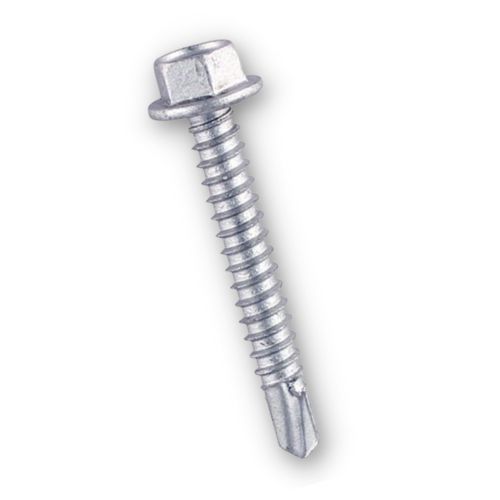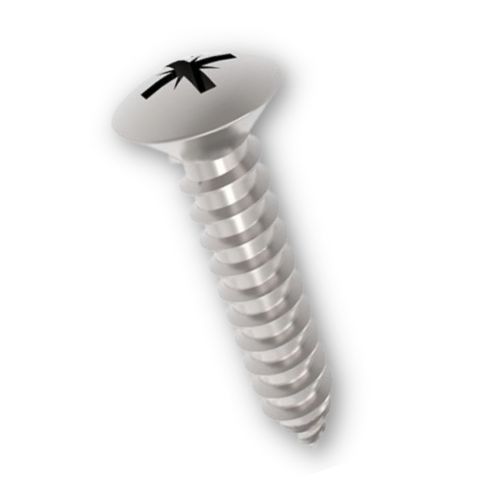Self-Drilling vs Self-Tapping Screws – The Differences
When you're purchasing screws for a project, it's important to make sure you’re choosing the right screw type for the job. If you choose a type of screw that’s not effectively used with the materials you’re using, the join between your materials won’t be secure, and could mean that your project is unsafe for use.
Two of the most common types of screws that often get confused for one another are self-drilling screws and self-tapping screws; while they might sound and look similar, they actually serve very different purposes!
To find out the differences between self-drilling and self-tapping screws, as well as the projects best suited to these types of screw, keep reading this quick and handy article!
What is a Self-Drilling Screw?
 Self-drilling screws can drill and tap into a hole without the need for pre-drilling a pilot hole. They feature a sharp point and unique flute design that allows them to cut through metal, wood, and plastic easily. Most commonly used in metal applications where the material is thick and more difficult to drill into, they can be found in a variety of applications such as in roofing, siding, or decking. Because they’re so quick easy to install, self-drilling screws are also often used in high-volume production applications.
Self-drilling screws can drill and tap into a hole without the need for pre-drilling a pilot hole. They feature a sharp point and unique flute design that allows them to cut through metal, wood, and plastic easily. Most commonly used in metal applications where the material is thick and more difficult to drill into, they can be found in a variety of applications such as in roofing, siding, or decking. Because they’re so quick easy to install, self-drilling screws are also often used in high-volume production applications.
Self-drilling screws are usually available in a wide range of sizes, lengths, and materials, such as carbon steel, stainless steel, and coated options. They’re also typically offered with a variety of different head types, including hex head, pan head, flat head and more.
What is a Self-Tapping Screw?
 Self-tapping screws, on the other hand, are designed to create threads in existing holes. Unlike self-drilling screws, they do require a pre-drilled pilot hole, but they tap their own thread – hence the name self-tapping. These screws feature a sharp point and a wider thread design that can cut into a variety of different materials, such as wood, plastic, and metal, creating a secure and tight join. Self-tapping screws are commonly used in applications where you need to join materials together, such as furniture assembly or fixture mounting, as well as other general construction projects such as carports, sheds, garages, cladding, and metal roofing.
Self-tapping screws, on the other hand, are designed to create threads in existing holes. Unlike self-drilling screws, they do require a pre-drilled pilot hole, but they tap their own thread – hence the name self-tapping. These screws feature a sharp point and a wider thread design that can cut into a variety of different materials, such as wood, plastic, and metal, creating a secure and tight join. Self-tapping screws are commonly used in applications where you need to join materials together, such as furniture assembly or fixture mounting, as well as other general construction projects such as carports, sheds, garages, cladding, and metal roofing.
Self-tapping screws are usually offered in a wide range of different lengths, sizes, and materials, such as carbon steel, stainless steel, and aluminium options. Head types offered with self-tapping screws include pan head, round head, and flat head. When it comes to installing self-tapping screws, there many different tools that you can fix them with, such as manual screwdrivers, power drills, and impact drivers.
The Differences Between Self-Drilling Screws & Self Tapping Screws
The main difference between the two types of screws is that self-drilling screws can drill and tap into the substrate without the need for pre-drilling a pilot hole, whereas self-tapping screws require a pilot hole for them to be installed securely.
Additionally, self-drilling screws feature a narrower thread than self-tapping screws, making them more efficient at drilling and creating threads in harder materials. Self-tapping screws have wider threads, which provide a more secure grip in softer materials.
Because of this, the screws also differ in the applications for which they should be used – self-drilling screws are best used with thicker materials such as metal, whilst self-tapping screws are much better suited for use with softer materials such as wood or plastic.
Which Screw is Right for the Job?
When you’re choosing between self-drilling screws and self-tapping screws, there are a couple of things you’ll need to consider:
- The material(s) that you’ll be working with.
- The thickness of your material(s).
- The size of the hole you need to create.
If you're working with a metal or a thicker material, we recommend using self-drilling screws. On the other hand, if you're working with softer materials like wood or plastic, we’d suggest going with self-tapping screws. One thing to consider is that both types of screw can be used for steel-to-steel or steel-to-timber applications where nuts and bolts do not create a secure enough join.
If you’re unsure which screw to use, it’s always best to check the manufacturer's recommendations for the product or material being used. You can also consult with a professional – click here to talk to our team of experts.
Click the links to shop our range of self-drilling screws and self-tapping screws.
If you have any questions that weren’t answered in this article, be sure to take a look at our other guides and tips articles. You can also contact our team for assistance or advice – we’re always happy to help!



